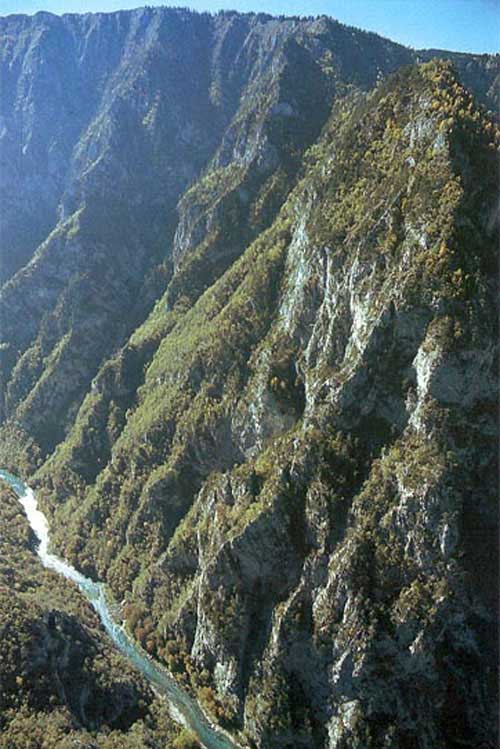1. National Day: National Day on July 13 marks the day in 1878 when Montenegro was recognized as an independent country at the Berlin Congress (as the 27th state in the world)
2. Name: The name ‘Montenegro’ literally means ‘black mountain’ and comes from the dark forested mountains that cover the country
3. Heights: Around 60% of the country is at more than 1,000 meters above sea level. The highest point is the Bobotov Kuk peak at 2,522 meters (although some sources claim that there are 3 higher peaks on the border with Albania)
4. World War I: The mountains have always been an essential part of Montenegro’s defense, helping to preserve the country’s independence until World War 1. World War I, where Montenegro suffered a major defeat to Austria-Hungary (in 1916)
5. Liberation: In 1918, the Allies liberated Montenegro from Austria-Hungary. At that time, Montenegro became part of Serbia and in 1922 it became part of the Kingdom of Yugoslavia.

Fact: The Tara Gorge in Montenegro is the longest canyon in Europe and the second longest in the world (only surpassed by the Grand Canyon in the US)
6. World War II : In 1941, during World War 2. During World War II, Mussolini invaded Montenegro and made it part of the Kingdom of Italy. Although Italian troops withdrew from the country in 1943, some German troops (who were allied with the Italians) remained until December 1944
7. SFR Yugoslavia: In 1943, the Socialist Republic of Montenegro was formed, which was 1 of 6 republics in the unified Socialist Federal Republic of Yugoslavia (SFR Yugoslavia). This lasted until 1992, when SFR Yugoslavia was dissolved and Serbia and Montenegro were united into the Federal Republic of Yugoslavia
8. Serbia and Montenegro: In 2003, the constitution was amended and the Federal Republic of Yugoslavia was renamed ‘Serbia and Montenegro’
9. Independence: On May 21, 2006, Montenegro gained full independence when the population seceded from Serbia in a referendum
10. Two capitals: Podgorica, with its 160,000 inhabitants, is Montenegro’s largest city and also the administrative capital (de facto). The city of Cetinje is the country’s 6th largest city and the country’s de jure capital. The situation with the two capitals is related to the fact that Cetinje is specified in the constitution as the country’s capital, has historically been the capital and still today houses a number of administrative institutions – but Podgorica is much larger and therefore in practice the real capital of Montenegro

Montenegro’s landscape is characterized by forested mountains rising close to the long coastline. Pictured are the Bay of Kotor (top), a lake in Durmitor National Park (center) and the island of Sveti Stefan (bottom)





